Heraldic playing cards
Reproduction of Richard Blome’s Heraldic playing cards, 1684, presented to lady guests at WCMPC Summer Meeting in 1888.
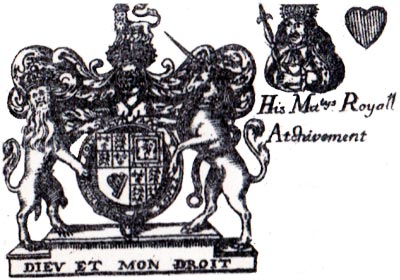
Reproduction of Richard Blome’s Heraldic playing cards (1684) presented to lady guests at the WCMPC Summer Meeting in 1888. The cards were originally made and “sold by Hen. Broom at the Gun in St. Pauls Churchyard where the said cards may be had in colours” [1675], and gave a thorough grounding in the art of heraldry.
Colours are represented by various types of hatching and furs are represented by shading marks. All this makes the cards difficult to interpret. Quite what the ladies made of it who knows?
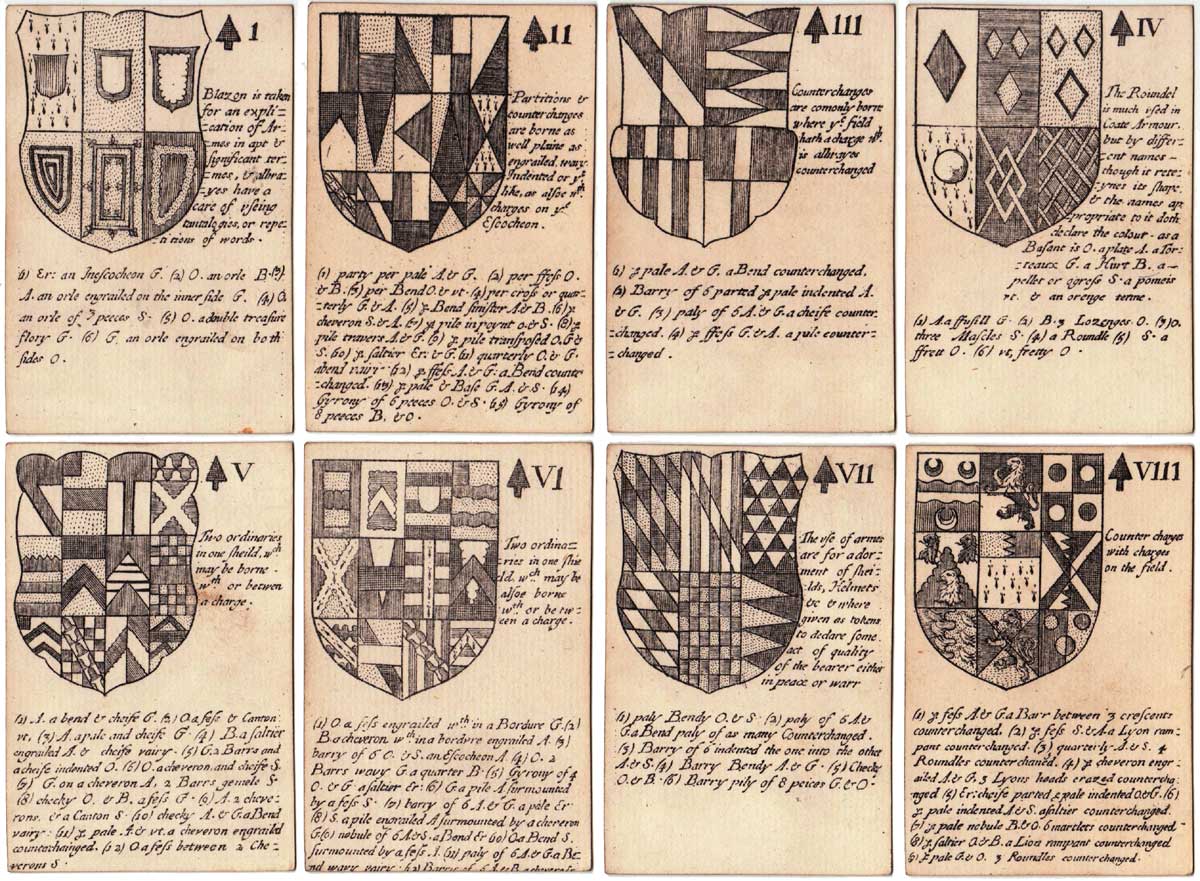


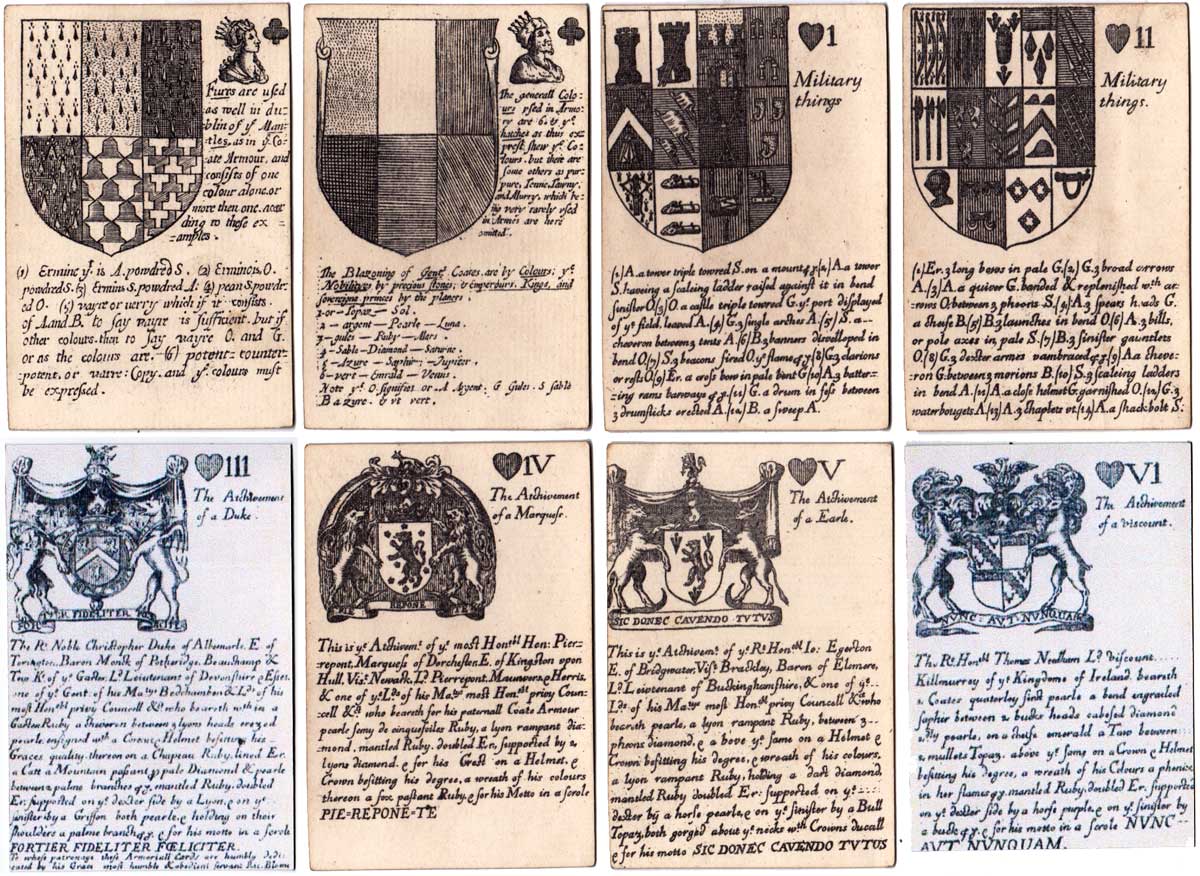

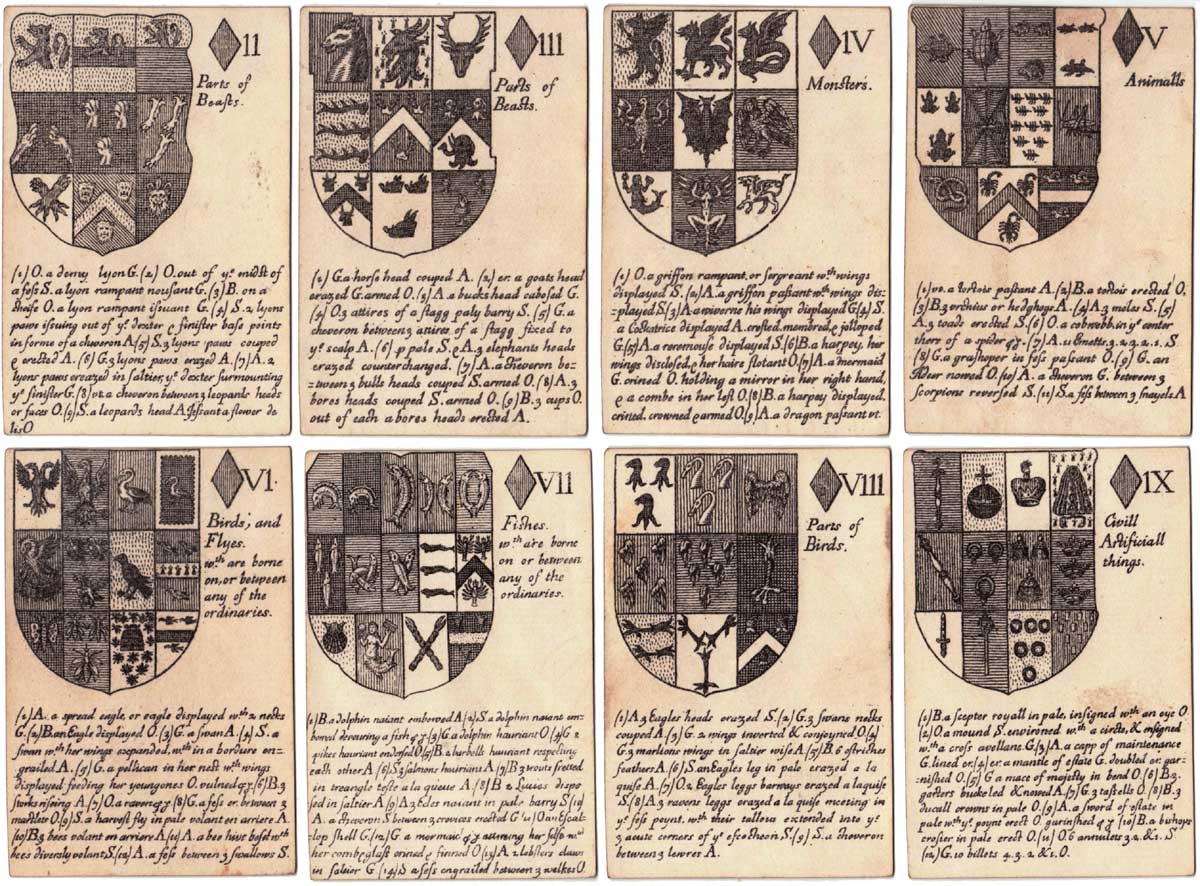
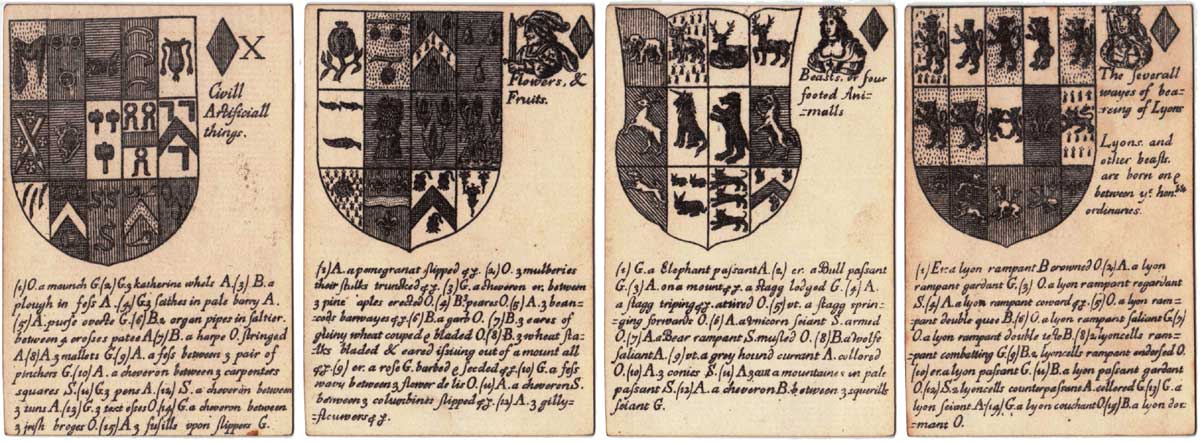
Above: reproduction of Richard Blome’s Heraldic playing cards of 1684, reproduction probably printed by Woolley & Co in 1888. 52 cards, plain backs and gilt edges in a plain slide case with leaflet by George Clulow. Note: missing cards re-created by Rex Pitts.
Further References
Bonhams: Blome (Richard) Armorial Cards►
British Museum: 1896,0501.929.1-52►
Thorpe, John G: The Worshipful Company of Makers of Playing Cards of the City of London, WCMPC, London, 2001
Worshipful Company of Makers of Playing Cards: Masters Installation Cards from 1882-1899►

By Rex Pitts (1940-2021)
United Kingdom • Member since January 30, 2009
Rex's main interest was in card games, because, he said, they were cheap and easy to get hold of in his early days of collecting. He is well known for his extensive knowledge of Pepys games and his book is on the bookshelves of many.
His other interest was non-standard playing cards. He also had collections of sheet music, music CDs, models of London buses, London Transport timetables and maps and other objects that intrigued him.
Rex had a chequered career at school. He was expelled twice, on one occasion for smoking! Despite this he trained as a radio engineer and worked for the BBC in the World Service.
Later he moved into sales and worked for a firm that made all kinds of packaging, a job he enjoyed until his retirement. He became an expert on boxes and would always investigate those that held his cards. He could always recognize a box made for Pepys, which were the same as those of Alf Cooke’s Universal Playing Card Company, who printed the card games. This interest changed into an ability to make and mend boxes, which he did with great dexterity. He loved this kind of handicraft work.
His dexterity of hand and eye soon led to his making card games of his own design. He spent hours and hours carefully cutting them out and colouring them by hand.

Leave a Reply
Your Name
Just nowRelated Articles
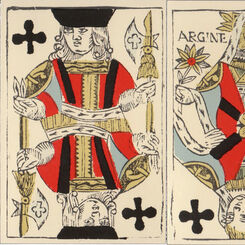
“Deck with French suits”
A facsimile of an early 19th century French-suited deck from the collection of F.X. Schmid.

Jeu Mythologique
“Jeu Mythologique” facsimile 18th century pack by J M Simon, 1983.
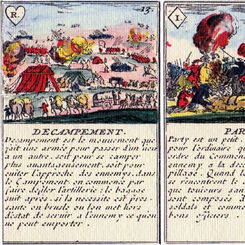
Le Jeu de la Guerre
Facsimile of “Le Jeu de la Guerre” designed by Gilles de la Boissière in 1698.
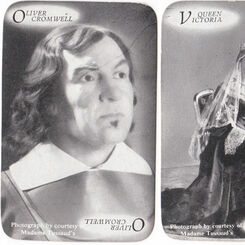
Have A Go
Have A Go card game published by Photo-Briton Ltd featuring photographs of waxwork figures from Mada...

Johannes Müller c.1840
Facsimile edition of Swiss suited deck first published by Johannes Müller in c.1840.

Rois de France
Cartes des Rois de France (1644) facsimile edition by Edizioni del Solleone, 1986.
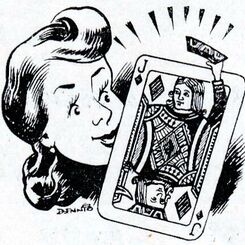
Catalogue of Magic Card Tricks
Gamagic Catalogue of Magic Card Tricks, c.1940. Everyone is familiar with playing cards, which makes...
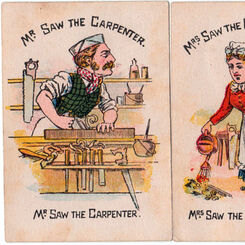
Funny Families
“Funny Families” card game manufactured by Woolley & Co, 1890s.

Snap by Woolley & Co
‘Cries of London Snap’ by Woolley & Co Ltd, c.1905 with cheerful figures of street vendors.
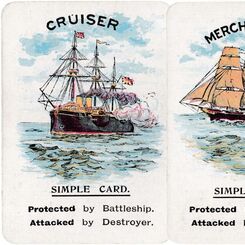
Sefite card game
“Sefite” card game, Woolley & Co,. Ltd, London, c.1905

Arms of English Peers
The Arms of English Peers playing cards were first published in 1686. Heraldry, or a knowledge of th...

Roberts Brothers Ltd, Gloucester
Roberts Brothers Ltd, Gloucester (Glevum Brand) ‘Old Maid’ card game, 1920s.
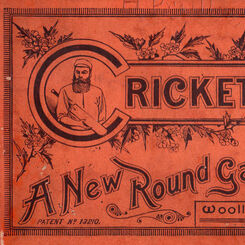
Crickette
“Crickette” card game manufactured by Woolley & Co., London, c.1890.

Tut=Tut
“Tut=Tut; or a Run in a Motor Car” published by Woolley & Co Ltd, early 1900s
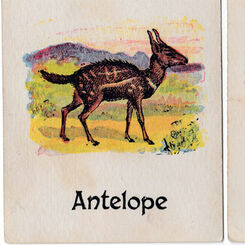
Oosehe
‘Oosehe’ animal card game published by Woolley & Co, c.1900.
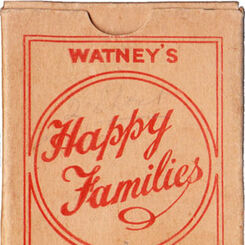
Watney’s Happy Families
A vintage Watney's Coombe Reid & Co Ltd promotional card game distributed by the brewery to their cu...

William Warter
William Warter's Proverbial Cards, which carry illustrations of old English proverbs, were first pub...

The Beggars’ Opera
The Beggars’ Opera Playing Cards were first published in 1728. The cards carry the words and music o...

Cries of London
The cards were printed from copper plates, with the red suit symbols being applied later by stencil....

Hewson Replica Pack
Hand-made replica 17th century English playing cards, based on museum originals.
Most Popular
Our top articles from the past 60 days


 Your comment here. Your comment here. Your comment here. Your comment here. Your comment here. Your comment here. Your comment here. Your comment here. Your comment here. Your comment here. Your comment here. Your comment here. Your comment here. Your comment here. Your comment here. Your comment here. Your comment here. Your comment here. Your comment here. Your comment here. Your comment here. Your comment here. Your comment here. Your comment here. Your comment here. Your comment here. Your comment here. Your comment here. Your comment here. Your comment here. Your comment here. Your comment here.
Your comment here. Your comment here. Your comment here. Your comment here. Your comment here. Your comment here. Your comment here. Your comment here. Your comment here. Your comment here. Your comment here. Your comment here. Your comment here. Your comment here. Your comment here. Your comment here. Your comment here. Your comment here. Your comment here. Your comment here. Your comment here. Your comment here. Your comment here. Your comment here. Your comment here. Your comment here. Your comment here. Your comment here. Your comment here. Your comment here. Your comment here. Your comment here.




















